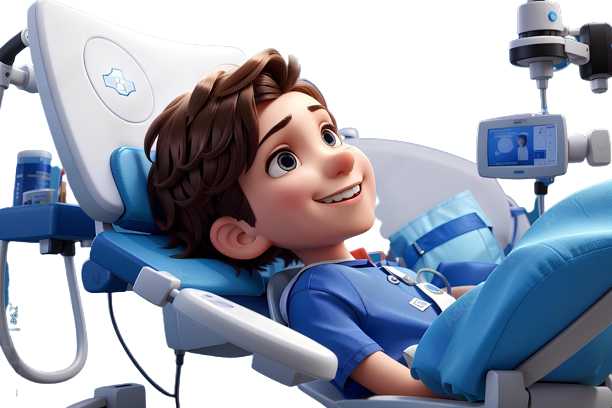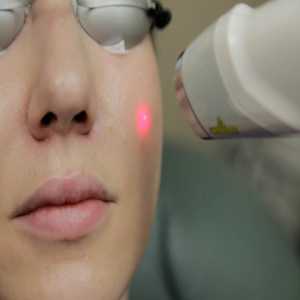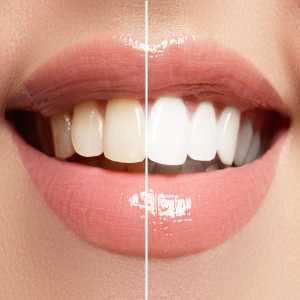
Understanding The Need For Pediatric Dental X-rays At A Clinic In Mumbai

Dental X-rays are a valuable diagnostic tool in pediatric dentistry. They offer detailed images of a child's teeth, gums, and jaw, helping dentists in Mumbai make accurate diagnoses and provide effective treatments. If you're wondering about the necessity of dental X-rays for your child, here's a comprehensive guide to understanding their role and importance in pediatric dental care.
What Are Pediatric Dental X-rays?
What It Is: Pediatric dental X-rays are imaging tests that use a small amount of radiation to create detailed pictures of the inside of your child's mouth.
Why It’s Important: They allow dentists to see structures that are not visible during a regular dental exam, helping to diagnose issues early and plan appropriate treatments.
Types of X-rays:
- Bitewing X-rays: Show the upper and lower teeth in one area of the mouth and help detect cavities between teeth.
- Periapical X-rays: Focus on a single tooth or a specific area, providing a detailed view of the tooth's root and surrounding bone.
- Panoramic X-rays: Capture a broad view of the entire mouth, including all teeth, the upper and lower jaws, and surrounding structures.
- Cephalometric X-rays: Used primarily for orthodontic evaluations to assess the relationship between teeth and jaws.
Why Are X-rays Necessary for Children?
What It Is: The reasons dental X-rays are often recommended for children.
Why It’s Important: Understanding the purpose of X-rays helps parents make informed decisions about their child’s dental health.
Reasons for X-rays:
- Detection of Hidden Issues: X-rays can reveal problems not visible during a physical exam, such as cavities between teeth, infections, or developmental abnormalities.
- Monitoring Growth and Development: They help track the growth of teeth and jaws, which is crucial for planning orthodontic treatments and ensuring that the child’s dental development is on track.
- Assessing Impacted Teeth: X-rays determine if teeth are developing properly or might be impacted (stuck) below the gum line.
- Evaluating Bone Health: They provide information about the health of the bone surrounding the teeth, which is important for diagnosing conditions like bone loss or cysts.
Safety Considerations for Pediatric Dental X-rays
What It Is: Measures and practices to ensure the safety of children during X-ray procedures.
Why It’s Important: Ensuring safety minimizes any potential risks associated with X-ray exposure and reassures parents about the procedure.
Safety Measures:
- Minimal Radiation: Pediatric dental X-rays use very low radiation levels, which are well within safety limits.
- Lead Aprons: Children wear lead aprons to protect their bodies from radiation, ensuring safety.
- Digital X-rays: Many clinics use digital X-ray technology, significantly reducing radiation exposure compared to traditional film X-rays.
- Careful Evaluation: Dentists only recommend X-rays when necessary, based on the child’s dental health and specific needs.
What to Expect During an X-ray Appointment
What It Is: Taking dental X-rays at a pediatric clinic.
Why It’s Important: Knowing what to expect helps prepare your child for the procedure and can make the experience more comfortable.
How It Typically Goes:
- Preparation: Your child will be asked to remove any jewelry or metal objects from their head and neck.
- Positioning: The dental hygienist or assistant will position your child in front of the X-ray machine and may use a small device to help hold the X-ray film or sensor in place.
- Exposure: Your child will be asked to stay still for a few seconds while taking the X-ray. The procedure is quick and usually takes only a few minutes.
- Comfort: Most children find the procedure painless and straightforward, though some might feel anxious. The staff will use gentle, reassuring language to help ease any concerns.
Interpreting X-ray Results
What It Is: Analyzing X-ray images to diagnose and plan treatment.
Why It’s Important: Accurate interpretation of X-ray results is crucial for effective treatment planning and ensuring your child’s dental health.
How It Works:
- Dentist’s Review: The pediatric dentist will carefully examine the X-ray images to identify any issues or abnormalities.
- Diagnosis: The dentist will diagnose any problems, such as cavities, infections, or developmental issues, based on the images.
- Treatment Plan: The dentist will use the X-ray findings to develop a personalized treatment plan that may include preventive measures, treatments, or orthodontic interventions.
Communicating with Your Pediatric Dentist
What It Is: Discuss the need for X-rays and their findings with your child’s dentist.
Why It’s Important: Open communication ensures you understand the purpose of X-rays and the results, helping you make informed decisions about your child’s care.
How to Communicate:
- Ask Questions: Don’t hesitate to ask the dentist why X-rays are needed, how they will be used, and what the results will reveal.
- Discuss Concerns: If you have any concerns about the procedure or radiation exposure, share them with the dentist. They can provide reassurance and additional information.
- Follow-Up: After the X-rays, discuss the findings with the dentist and understand the next steps in your child’s dental care.
Conclusion
Pediatric dental X-rays are essential to comprehensive dental care, providing valuable information that helps ensure your child’s oral health is on the right track. With minimal risk and significant benefits, these X-rays assist in early detection and treatment of dental issues, contributing to a healthier, brighter smile. By understanding the role and necessity of X-rays, you can feel more confident about your child's care at their pediatric dental clinic in Mumbai. Open communication with your dentist and a commitment to regular dental check-ups will help keep your child’s teeth and gums healthy for years.
If you live in Chembur, and searching for a Kids Dental Clinic in Chembur, you should consider Tiny Teeth. Call us to Book an Appointment: at +91-9152869954.
Author Bio
We are the best child dental clinic in Tilak Nagar, Mumbai: Check for more details Dr. Saurabh Gandhi. tiny teeth. Dentistry for kids and teens
Article Comments
No Comments!
At present there are zero comments on this article.
Why not be the first to make a comment?
Similar Articles
Search Pages
User Upgrade
account to full use of editor,
Including hyperlinks
Article Categories
There are zero sub-categories in this parent category.
There are zero sub-categories in this parent category.

















